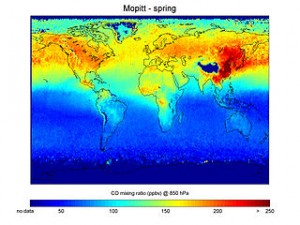
I am all for sky-based observation to track air pollution. The reasons for conducting any such aerial surveillance – and I want to be very clear here – in my opinion, should be to not only identify the specific pollutant or pollutants being observed and to pinpoint the source or sources of said pollutant or pollutants, but once that information has been established, that this then leads to efforts to control if not nip the identified pollution in the bud. And, as far as I’m concerned, the sooner the better.
In the July 2, 2013 Phys.org™ article: “Airborne pollution-scanning device maps Leicester’s air quality,” University of Leicester, England (the article’s contributor) stressed, “University of Leicester physicists used their sophisticated air quality measuring spectrometer to produce striking ‘heatmap’ style images of pollution levels in Leicester as part of the Airborne Air Quality Mapper (AAQM) project.
“The images show how levels of nitrogen dioxide (NO2) vary around the city – revealing the differences in air quality between green, wooded areas and busy road junctions and areas of industry.
“The results could help draw attention to polluted areas – and help inform future environmental planning decisions.”
The National Aeronautics and Space Administration (NASA) has been conducting its own aerial air pollution surveillance via airplane and from outer space with more planned.
So, what is different about AAQM; why is it needed?
“The images give a very useful indication of the relative air quality levels across the city – and the team are [sic] currently carrying out further research to determine the exact concentrations of NO2 present in the air for each reading,” the University of Leicester in the Phys.org™ article in question explained.
“This will reveal the approximate figures for the amount [of] NO2 in the atmosphere – and will indicate whether there are areas where the concentration of NO2 is high enough to be of concern.”
Being that the aerial air pollution surveillance in this case seems both unique and highly specialized, I trust all of the reconnaissance work will be of considerable value and help in terms of cleaning said pollution up.
Image above: NASA
– Alan Kandel